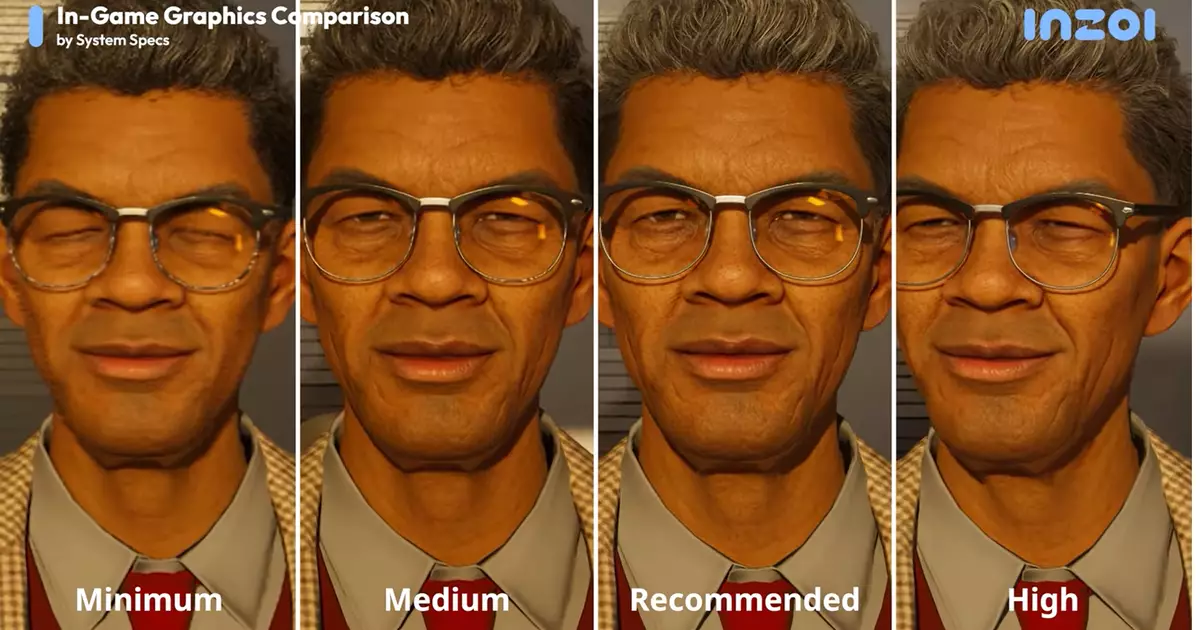The gaming landscape has seen a radical transformation with the incorporation of generative AI technologies, and Krafton’s upcoming life simulation game, inZOI, is poised to be at the forefront of this evolution. As a fervent fan of life simulators, I am both intrigued and apprehensive about what inZOI brings to the table. The crux of my concern lies in Krafton’s choice to embed live generative AI into the very fabric of the game. With the power to create outfits, animate characters, and alter environments through simple prompts, inZOI seems to transcend traditional gameplay boundaries. However, this reliance on AI also raises questions about the authenticity of player experience and the risks inherent in automated content generation.
Generative AI, especially when minimally supervised, has shown potential for biases and uncontrolled outcomes. Given that inZOI promises to generate not just objects but also “thoughts and actions” of its avatars—the Zois—this introduces an unsettling possibility: are we ceding too much creative control to an algorithm? Without rigorous oversight, the charming whims of our digital compatriots could veer into realms that are less than desirable, shaping narratives and interactions that may be both unintentional and problematic.
Visual Fidelity or Visual Fright?
A primary selling point for inZOI is its commitment to photorealistic visuals, a feature that could thrill many gamers while simultaneously unsettling others. The marketing materials have consistently showcased stunning graphics that are undeniably impressive. However, on a personal level, I can’t shake off the sense of unease that these hyper-realistic representations evoke. The avatars come across less as relatable characters and more as lifeless mannequins draped in the latest fashion. This aesthetic choice elicits a reaction akin to the uncanny valley—the phenomenon where humanoid forms that are very nearly lifelike provoke feelings of unease or eeriness.
Let’s not forget that while sharp graphics can enhance immersion, they can also expose unsettling performances within the game world. The Zois, swathed in fashion-forward apparel, seem more interested in posing than living, making me question whether such polished visuals might ultimately detract from the essence of what makes life simulations enjoyable: the chaos, the imperfection, the charm of the awkwardly rendered.
System Requirements and Accessibility Concerns
As the excitement about inZOI garners momentum, attention has naturally turned toward its system requirements. In an era where high-end graphics demand substantial hardware, Krafton’s acknowledgment of needing robust specs raises essential questions regarding accessibility. The optimism surrounding their commitment to lowering system requirements while maintaining quality is commendable. Their aspiration to introduce an auto-adjust feature to ensure optimal performance may indeed make the game welcoming to a wider audience, yet it remains to be seen how effectively this will be implemented.
Interestingly, I long for a mode that lets players run the game on extremely low settings. The notion of a ‘potato mode’ may sound silly, but there is merit in allowing players to experience a stripped-back version of a game. Historically, lowering graphics can reveal the creativity behind level design and art direction. It fosters a unique appreciation for gameplay mechanics that might go unnoticed at higher fidelity. Imagine inZOI morphing into a surreal, blocky world where the Zois are barely more than geometric shapes, prompting us to interact in unexpected ways. The beauty of gaming often lies in the exploration of various aesthetic interpretations, and an option to run it on such minimal specs could facilitate that exploration.
Intrigued Yet Hesitant
As the early access date draws closer, the dichotomy of excitement and skepticism surrounding inZOI continues to tug at my thoughts. It arguably embodies the potential of modern gaming, where AI-driven narratives and aesthetics converge, yet it also raises essential inquiries about player agency, emotional connection, and the very heartbeat of simulation games. The arrival of inZOI brings with it the thrill of innovation, yet it serves as a cautionary tale about the potential losses involved in the relentless pursuit of realism and technological ambition. How will it ultimately balance these intricate components? Only time—and the players’ responses—will reveal whether inZOI can usher in a new era of life simulation that is as soulful as it is sophisticated.

